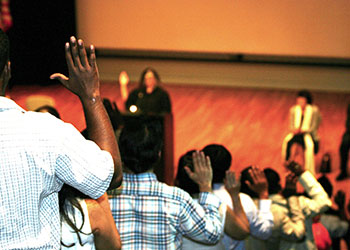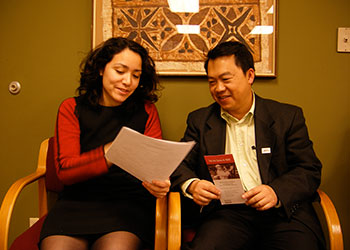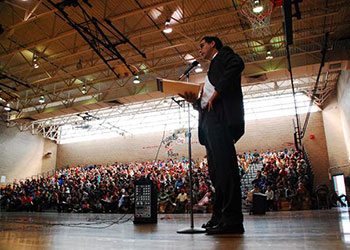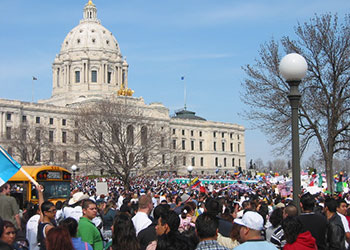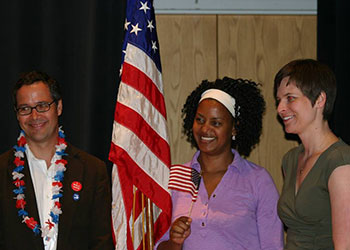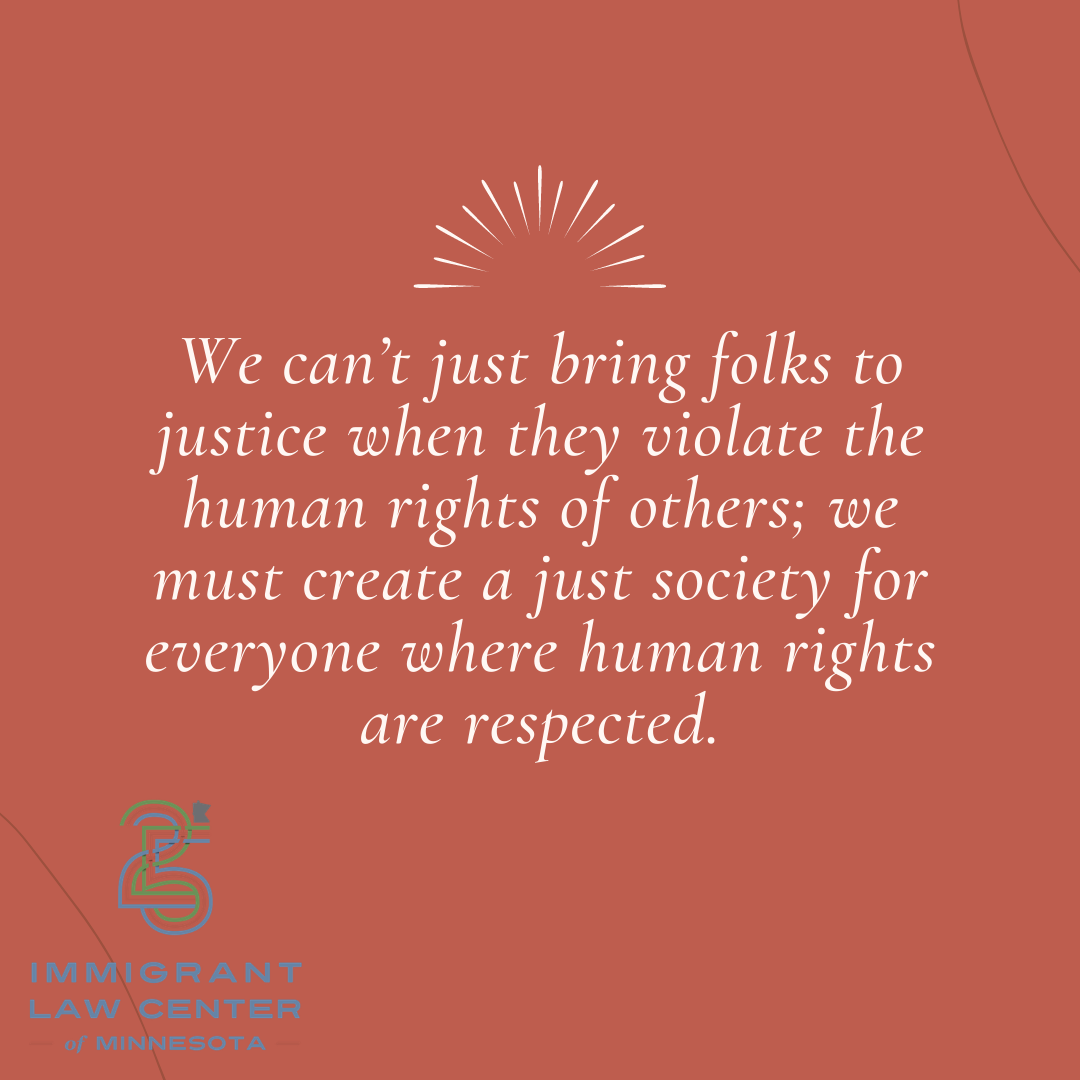Archives
Biden, in reversal, raises the refugee admission cap to 62,500 in the next six months.
Hoja de Datos: Carga Publica (Actual a partir del 18 de marzo, 2021)
(Actual a partir del 18 de marzo, 2021)
El 9 de marzo, 2021, la administración del presidente Biden anunció que no defendería el cambio en la regla de “carga pública” de la administración Trump. Siguiendo el anunció, el Departamento de Seguridad Nacional (DHS) anunció que el Departamento de Justicia (DOJ) ya no defender a la regla final de carga pública de 2019.
¿Qué es carga pública?
Carga pública es una prueba para inmigrantes que vienen a los Estado Unidos y para algunos inmigrantes en los Estados Unidos que están solicitando una residencia permanente por primera vez. Es una prueba para identificar si necesitarán beneficios públicos en el futuro.
La “Carga pública” se remonta al menos a la Ley de Inmigración de 1882. En 1996, el término se definió como alguien que “depende principalmente” de la asistencia del gobierno, lo que significa que proporciona más de la mitad de sus ingresos.
¿Qué significan los anuncios del 9 de marzo, 2021 para la carga pública?
A partir del 9 de marzo, 2021, la Regla de carga pública de 1999 (la policía vigente antes del cambio de la regla de carga pública de 2019) ahora está de Nuevo en efecto. Las expansiones de 2019 de la regla de “carga publica” ya no están en efecto.
La forma I-944, Declaración de Autosuficiencia, ya no es necesaria y no debe enviarse al presentar la forma I-485 (para la residencia permanente).
(Para obtener una lista detallada de los beneficios, consulte la siguiente tabla.)
¿Cuál es la prueba de carga pública actual?
La prueba de “carga publica” se aplica a las personas que ingresan a los Estados Unidos mediante la obtención de una visa en una oficina consular de los Estados Unidos. en el extranjero. Cuando alguien solicita un ajuste de estatus para convertirse en residente permanente legal (titular de tarjeta verde); o cuando un titular de la tarjeta verde deja los Estados Unidos por más de 180 días consecutivos (6 meses) y vuelve a ingresar.
El peticionario (la persona que solicita la inmigración de su familiar a los Estados Unidos) debe presentar una Declaración jurada de apoyo (formulario I-864), un contrato legalmente ejecutable, para demostrar que su familiar no dependerá de los beneficios del gobierno para su futuro apoyo financiero. La Declaración Jurada de Apoyo está vigente hasta que el miembro de la familia inmigrante se convierte en ciudadano de los Estados o se le acredita 40 trimestres de trabajo (generalmente 10 años).
¿Quién se ve afectado por la prueba de carga pública?
La prueba de carga pública se aplica a las personas:
- Que entran a los Estados Unidos obteniendo una visa en una Embajada o Consulado de los Estado Unidos en el extranjero;
- Cuando alguien dentro de los Estados Unidos solicita un ajuste de estatus para convertirse en residente permanente legal (titular de la tarjeta verde); o
- Cuando un titular de la tarjeta verde sale de los Estados Unidos por más de 180 días consecutivos (6 meses) y Vuelve a ingresar.
¿Quién no se ve afectado por la prueba de carga pública?
La prueba de carga pública no se aplica a:
- Ciudadanos Estadounidenses,
- Residentes permanentes legales (titulares de tarjetas verdes) que solicitan la ciudadanía;
- Ajuste de estatus de refugiados y asilados;
- Auto peticionarios de VAWA,
- Solicitantes de visas U y T,
- Jóvenes inmigrantes especiales, y
- Algunos otros grupos de no ciudadanos.
Aunque algunos inmigrantes entran en la categoría de exentos, es posible que no pasen la prueba de carga pública cuando soliciten que sus familiares se reúnan con ellos en el futuro. Consulte a un abogado de inmigración para determinar si puede verse afectado.
Obtenga ayuda: Immigrant Law Center of Minnesota (ILCM) oficina legal ofrece servicios legales de inmigración gratuitos a inmigrantes de bajos ingresos en una variedad de asuntos de inmigración. Para obtener más información sobre cómo Podemos ayudarlo, visite nuestro sitio web en www.ilcm.org o llámenos al (651) 641-1011.
| Beneficios incluido en la prueba de carga pública | Beneficios excluidos |
|
Los siguientes beneficios no están incluidos y no se contarán:
|
RCBA Awards Recognize Contribution to the Law and Community
Local residents learn about border conditions, community implications
An unusual coalition as Supreme Court rules for immigrant
President Biden’s flip-flop on refugees creates confusion for Minnesota families. We asked an immigration expert what happened to Biden’s campaign promises—and what’s next.
COVID-19 Mobile Vaccination Unit Project: Frequently Asked Questions
The Minnesota Department of Health (MDH), Blue Cross and Blue Shield of Minnesota, Metro Transit, the Metropolitan Council, and Minnesota Department of Transportation are partnering to bring mobile vaccination units to communities throughout the state of Minnesota. This provides an opportunity to create a more equitable distribution of vaccines, prioritize vulnerable and underserved communities, and reduce barriers to vaccination by going directly to communities.
- Focus communities for the mobile vaccination units will be under-resourced communities identified using the CDC Social Vulnerability Index (https://www.atsdr.cdc.gov/placeandhealth/svi/index.html). These communities include, but are not limited to: People of color; urban Native Americans; LGBTQI+; people with disabilities and unique health needs; people experiencing homelessness; people more comfortable getting vaccinated in a trusted community space versus a clinic or similar; and people without access to vehicles.
Metro Transit turned six underutilized transit buses into mobile vaccination units by removing seating and installing new equipment. The buses meet ADA requirements for transit vehicles. The mobile vaccination units are a highly targeted vaccine distribution strategy, intended to bring vaccines to people who would otherwise have a hard time getting vaccinated due to barriers, including transportation barriers, technology barriers, and geographic barriers. Mobile vaccination buses are not intended for mass vaccination events.
The first buses will deploy on April 19 and will continue to operate Monday through Thursday throughout the summer.
What does it mean that the mobile units reduce barriers to vaccine?
- These events are intended to happen in spaces where people live, work, and visit. Mobile units can help reduce transportation, geography, language, technology, and other barriers that may prevent people from accessing COVID-19 vaccines. All COVID-19 vaccine is free. IDs, proof of citizenship, and insurance are not required.
Will there be people who speak languages other than English and information in other languages at the mobile vaccination unit?
- During the mobile vaccination unit event planning, host sites will be asked to identify specific language barriers and needs. The MDH team will work in partnership with the host site to prepare appropriate materials, translate specific resources, schedule multi-lingual staff when available, and request interpretation services. The mobile unit staff will also have access to Language Line and be able to print materials on the bus as needed.
Will the mobile vaccination units be able to serve people with disabilities who use mobility devices like a walker, wheelchair, scooter, or crutches?
- Yes, all transit buses that were changed into mobile vaccination units meet ADA requirements for transit vehicles. Additionally, there will be a longer, attached ramp with a handrail for boarding the mobile vaccination units.
- Everyone that arrives for an appointment will be able to get the vaccine. To meet the needs of all people, please note that some vaccines may be administered outside of the bus in a covered area. All staff are trained and able to do this.
How is MDH selecting mobile vaccination unit locations?
- We are using state demographic data, vaccination data, testing data; and input from trusted community partners, local public health, and MDH equity leadership.
- We are also encouraging communities and local organizations to provide input by requesting a mobile vaccination unit.
How can my community sign up to host a mobile vaccination unit?
- Communities can request a mobile vaccination unit through the MDH Mobile Vaccine Clinic Registration Form (LINK: https://redcap-vac.web.health.state.mn.us/redcap/surveys/?s=XYWXWHE3EF). Completing this form does not guarantee a visit from a mobile unit. Requests will be prioritized using an equity-driven prioritization tool (looking at demographics and current vaccination locations) and will be balanced with the community program logistical needs and goals. Some community sites might not be best suited for a mobile vaccination unit, but rather a pop-up site or something similar.
- We encourage communities to connect with their local public health agency before requesting a mobile unit. We want to work with community partners that have a vaccination gap that can’t or isn’t already being filled by local public health (whether that be due to staffing capacity, transportation barriers, or other reasons).
- Community partners who are selected as a mobile vaccination site will be expected to conduct outreach with community prior to the mobile unit event. MDH will provide templates and resources to do this.
How many people can the mobile unit vaccinate per day?
- Each mobile unit is prepared to vaccinate around 100-150 people each day, depending on travel time.
Do you have to make an appointment?
- Yes, we will be working with community organizations to help promote the mobile vaccination unit and get people registered for appointments before it arrives. This helps us make sure all of the available vaccine doses are used and that people from the intended community are able to get vaccinated.
- There will be some walk-in spots available for members of the targeted community.
How can community members sign up for an appointment at a mobile vaccine event?
- The community partner/organization will share information with how to sign-up once they know when a bus will be coming to their community. They will be reaching out to their community members in a targeted way.
- As of March 30, all Minnesotans 16 years of age and older will be eligible to receive a vaccine. The mobile units can vaccinate any Minnesotan 18 years of age and older.
How can community members find out if there is, or will be, a mobile vaccination event near them?
- When a mobile unit is scheduled to come to a community site, community partners hosting the bus will reach out to their community to help schedule appointments, identify and plan for accessibility needs, and answer questions.
What vaccine will be offered at the mobile vaccination units?
- All of the FDA-authorized vaccines available in Minnesota are effective and have impressive results in preventing severe illness and death from COVID-19.
- The vaccine offered will depend on our vaccine supply and allocation, as this can change weekly. We encourage all Minnesotans to take the vaccine that’s available to them, regardless of which type it is.
- Blue Cross and MDH want to ensure that people feel comfortable and confident in the vaccine they receive. If for any reason a person does not feel comfortable with the vaccine option available in our mobile units, volunteers will work to find other available options and appointments.
- For specific questions on vaccine type offered: The vaccination buses are equipped to handle either Johnson & Johnson or Moderna vaccine. The buses will have Moderna vaccine for the first week (week of April 19).
Minnesota Department of Health | health.mn.gov | 651-201-5000
625 Robert Street North PO Box 64975, St. Paul, MN 55164-0975
Contact health.communications@state.mn.us to request an alternate format.
Make no mistake, the work has just begun.
As you’ve likely heard, Derek Chauvin was found guilty of all charges in the murder of George Floyd. We are relieved by this news, but we know that the work is not over. Chauvin was held accountable, something that is rare but insufficient. We can’t just bring folks to justice when they violate the human rights of others; we must create a just society for everyone where human rights are respected.
The same day Chauvin was found guilty, Ma’Khia Bryant, a 16-year-old girl, was fatally shot by a police officer in Columbus, Ohio. She now joins Adam Toledo, Daunte Wright, and all the other youth who were unjustly killed by the police. Chauvin’s trial and verdict is just a drop in the bucket. Make no mistake, the work has just begun.
